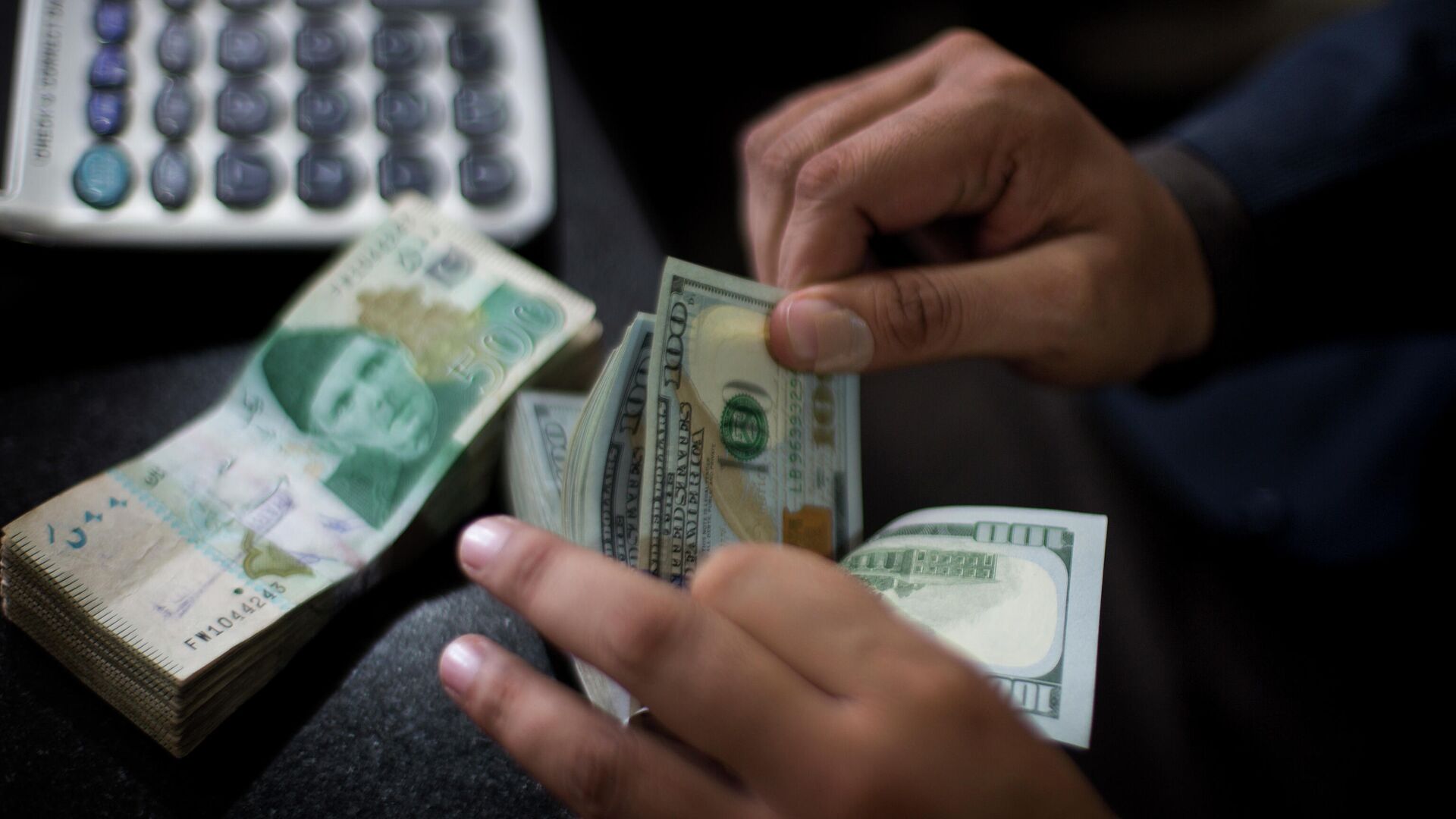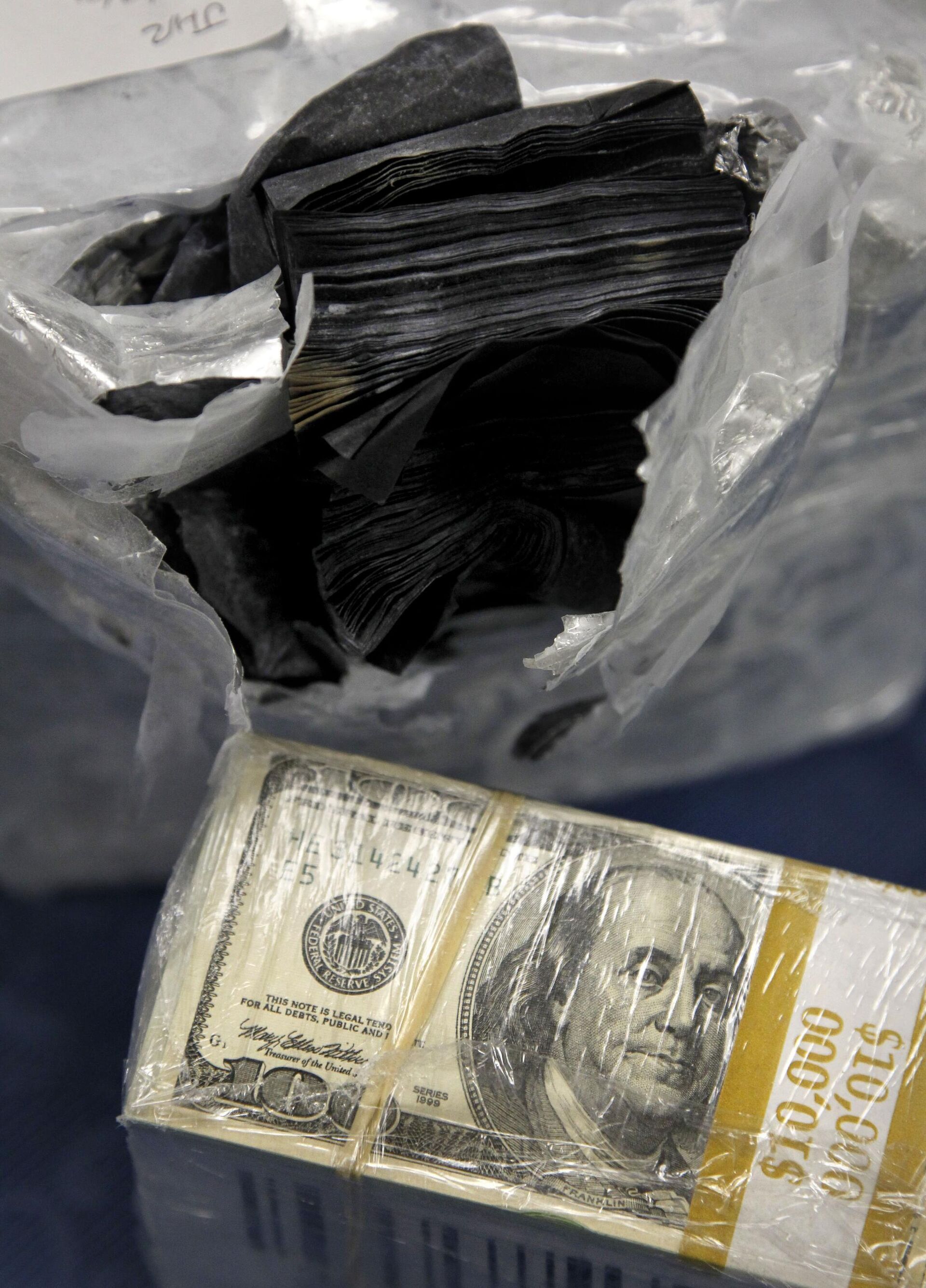https://sputniknews.in/20231003/why-did-pakistans-rupee-emerge-as-septembers-best-performing-global-currency-4559694.html
Why Did Pakistan's Rupee Emerge as September's Best-Performing Global Currency?
Why Did Pakistan's Rupee Emerge as September's Best-Performing Global Currency?
Sputnik India
The Pakistani rupee became the most profitable currency in the world in September, according to a report by Bloomberg.
2023-10-03T08:17+0530
2023-10-03T08:17+0530
2023-10-03T10:36+0530
pakistan
south asia
global economy
trade corridor
trade barriers
economics
economic crisis
afghanistan-pakistan border
https://cdn1.img.sputniknews.in/img/07e7/02/0a/838799_0:129:3073:1857_1920x0_80_0_0_a3f3ce71f0a86979e07c08bd590620d7.jpg
The Pakistani rupee became the most profitable currency in the world in September, according to a report by Bloomberg. This strengthening was observed, among other things, due to government measures to curb the illegal trade in dollars, that is, the sale of dollars without any records and money transfers through unofficial channels.Pakistan began to crack down on illegal dollar trading after the rupee weakened to a record low of 320 against the dollar. However, on October 1, the exchange rate was 289 rupees per dollar.Sputnik India reached out to three senior analysts who explained why the government finally started to crack down on the smuggling of dollars and how this strengthening of the rupee does not necessarily mean that the economy is getting better.Hawala originated in South Asia during the 8th century and is used throughout the world today, particularly in the Islamic community, as an alternative means of conducting funds transfers. Unlike the conventional method of transferring money across borders through bank wire transfers, money transfer in hawala is arranged through a network of hawaladars or hawala dealers. Hawala dealers keep an informal journal to record all credit and debit transactions on their accounts.Jaffery said that as long as there is a market for Hawala in Pakistan, the exchange rate isn't going anywhere regardless of how many crackdowns the government launches. It is really the question of consistency that makes these measures artificial and short-term.According to Scotland-based writer and political observer, Parvez Salik, the rupee may have been artificially inflated.According to Salik there could be some “trickery and artificial feel-good factors” initiated by the establishment and political parties before the general election scheduled for February 2024.Meanwhile, some reports suggest that the rupee appreciation run is to be attributed to the government's administrative measures such as structural reforms. In September, the State Bank of Pakistan (SBP) announced structural reforms targeting the Exchange Companies (ECs) sector. Among the measures announced is the central bank order for commercial banks to establish their own ECs as self-owned subsidiaries. Moreover, the SBP also directed a raise in the minimum capital requirement for ECs from Rs 200 million to Rs 500 million.The Black DollarBut despite these measures, it is not easy to control illegal currency trade and smuggling in Pakistan as just last week excise officials in Khyber Pakhtunkhwa province made a huge seizure on the motorway interchange when they found over $200,000 during a vehicle search. The currency bore a black tint.These darkened notes are known as “black dollars.” The dollar mafia operating in the country paints the dollars black to avoid detection. These notes can be changed back to their original state using a specific chemical, but black dollars make detection much harder for law enforcement agencies.Following such incidents, the enforcement officers were instructed to escalate operations against people involved in the black dollar smuggling. The police are keeping vigilant on the chemicals capable of restoring these black dollars to their original state and chemical sellers have also been warned to remain aware against potentially illegal purchases.Pakistani Media Raised the AlarmAccording to Dr. Shahid Rashid, a former unit manager at Engro Corporation and financial analyst, efforts by the police might not be enough because corruption runs deep within the system.It is widely known that oil, cooking oil, and many other food products are smuggled from Iran into Pakistan."The smuggling payment for these goods is done in dollars, not in Pakistani rupees. When smuggling rises, the dollars exit the country. When demand for the dollar rises to cater for the smuggled items, the rupee depreciates. Hence, the dollar mafia in Pakistan took advantage of the political instability, as chaos rose, the systems weakened," Rashid told Sputnik.He further said that in his opinion, the Pakistani media played a big role in raising alarm about these smuggling issues by talking about them on air to the public.In conclusion, Dr. Rashid said that in any country where there is political instability, such practices become common. Hence, it is vital for Pakistan to bring its political apparatus into a stable and secure state first in order to stabilize the economy in the long term.
pakistan
south asia
afghanistan-pakistan border
Sputnik India
feedback.hindi@sputniknews.com
+74956456601
MIA „Rossiya Segodnya“
2023
Aneela Rashid
https://cdn1.img.sputniknews.in/img/07e6/0c/0d/74548_0:0:485:484_100x100_80_0_0_821526e967ae85d041e2d30ee34fa1de.jpg
Aneela Rashid
https://cdn1.img.sputniknews.in/img/07e6/0c/0d/74548_0:0:485:484_100x100_80_0_0_821526e967ae85d041e2d30ee34fa1de.jpg
News
en_IN
Sputnik India
feedback.hindi@sputniknews.com
+74956456601
MIA „Rossiya Segodnya“
Sputnik India
feedback.hindi@sputniknews.com
+74956456601
MIA „Rossiya Segodnya“
Aneela Rashid
https://cdn1.img.sputniknews.in/img/07e6/0c/0d/74548_0:0:485:484_100x100_80_0_0_821526e967ae85d041e2d30ee34fa1de.jpg
pakistani rupee, what is black dollar, best-performing global currency, pakistan, pakistan economy, hawala
pakistani rupee, what is black dollar, best-performing global currency, pakistan, pakistan economy, hawala
Why Did Pakistan's Rupee Emerge as September's Best-Performing Global Currency?
08:17 03.10.2023 (Updated: 10:36 03.10.2023) To the surprise of many, the exchange rate of the Pakistan's rupee against the US dollar strengthened by about 6% over the month, while most currencies fell against the greenback.
The Pakistani rupee became the most profitable currency in the world in September, according to a report by Bloomberg.
This strengthening was observed, among other things, due to government measures to curb the illegal trade in dollars, that is, the sale of dollars without any records and money transfers through unofficial channels.
Pakistan began to crack down on illegal dollar trading after the rupee weakened to a record low of 320 against the dollar. However, on October 1, the exchange rate was 289 rupees per dollar.
Sputnik India reached out to three senior analysts who explained why the government finally started to crack down on the smuggling of dollars and how this strengthening of the rupee does not necessarily mean that the economy is getting better.
Director of UK-based Midstone Centre for International Affairs, Faran Jaffery, said: "The strengthening of the Pakistani rupee is temporary and has been brought about by artificial or short-term measures. It is true that the government, nudged by the military, has launched a crackdown against illegal trade in dollars, including Hawala dealers. But the problem in countries like Pakistan is the lack of consistency."
Hawala originated in South Asia during the 8th century and is used throughout the world today, particularly in the Islamic community, as an alternative means of conducting funds transfers. Unlike the conventional method of transferring money across borders through bank wire transfers, money transfer in hawala is arranged through a network of hawaladars or hawala dealers. Hawala dealers keep an informal journal to record all credit and debit transactions on their accounts.
Jaffery said that as long as there is a market for Hawala in Pakistan, the exchange rate isn't going anywhere regardless of how many crackdowns the government launches. It is really the question of consistency that makes these measures artificial and short-term.
According to Scotland-based writer and political observer, Parvez Salik, the rupee may have been artificially inflated.
"The Afghan afghani is similarly staying strong against the dollar rate (78 afghani to a dollar), but half the country is facing severe poverty. Any currency can be artificially inflated, but the real test is its GDP (gross domestic product), exchange rate and national debt. The Pakistani rupee was once 30 to a dollar while it is now nearly 300,” Salik told Sputnik India.
According to Salik there could be some “trickery and artificial feel-good factors” initiated by the establishment and political parties before the general election scheduled for February 2024.
"Another factor for the rupee strengthening could be the budget crisis in the US as the funding bill has not been approved yet and that could lead to a shutdown, hence the US dollar is weak just now," Salik added.
Meanwhile, some reports suggest that the rupee appreciation run is to be attributed to the government's administrative measures such as structural reforms. In September, the State Bank of Pakistan (SBP) announced structural reforms targeting the Exchange Companies (ECs) sector. Among the measures announced is the central bank order for commercial banks to establish their own ECs as self-owned subsidiaries. Moreover, the SBP also directed a raise in the minimum capital requirement for ECs from Rs 200 million to Rs 500 million.
But despite these measures, it is not easy to control illegal currency trade and smuggling in Pakistan as just last week excise officials in Khyber Pakhtunkhwa province made a huge seizure on the motorway interchange when they found over $200,000 during a vehicle search. The
currency bore a black tint.
These darkened notes are known as “black dollars.” The dollar mafia operating in the country paints the dollars black to avoid detection. These notes can be changed back to their original state using a specific chemical, but black dollars make detection much harder for law enforcement agencies.
Following such incidents, the enforcement officers were instructed to escalate operations against people involved in the black dollar smuggling. The police are keeping vigilant on the chemicals capable of restoring these black dollars to their original state and chemical sellers have also been warned to remain aware against potentially illegal purchases.
Pakistani Media Raised the Alarm
According to Dr. Shahid Rashid, a former unit manager at Engro Corporation and financial analyst, efforts by the police might not be enough because corruption runs deep within the system.
"There are many ways in which dollars are being smuggled out of the country, but mostly it is taking place through the eastern borders: Iran-Pakistan and Afghanistan-Pakistan borders. Who controls these borders? Pakistan's security agencies, which is the army. It means that within the ranks there are parties/individuals who are profiting from this rampant smuggling. Otherwise, how can so much cross-border dollar smuggling be taking place without their knowledge? So until and unless these corrupt practices stop, the economy will continue to suffer," Rashid said.
It is widely known that oil, cooking oil, and many other food products are smuggled from Iran into Pakistan.
"The smuggling payment for these goods is done in dollars, not in Pakistani rupees. When smuggling rises, the dollars exit the country. When demand for the dollar rises to cater for the smuggled items, the rupee depreciates. Hence, the dollar mafia in Pakistan took advantage of the political instability, as
chaos rose, the systems weakened," Rashid told Sputnik.
He further said that in his opinion, the Pakistani media played a big role in raising alarm about these smuggling issues by talking about them on air to the public.
“That stirred authorities to start the crackdown on smuggling. When smuggling of goods is curtailed, the dollars stay in the country and the rupee starts to appreciate. Hence, indirectly the media also deserves credit for the recent rupee appreciation,” the analyst stressed.
In conclusion, Dr. Rashid said that in any country where there is political instability, such practices become common. Hence, it is vital for Pakistan to bring its political apparatus into a stable and secure state first in order to stabilize the economy in the long term.



